Andrew Hardwick is a widely exhibited artist and RWA academician whose richly textured work explores ideas of landscape, history and memory. Although based in a studio on a smallholding close to Royal Portbury Dock near Bristol, Andrew has a long-standing affinity with the moors and coastline of the south west peninsular, which have featured in several of his works.
The Collective’s Jon Vernon spoke to Andrew to find out more about his artistic practice and how Dartmoor in particular has influenced his work.
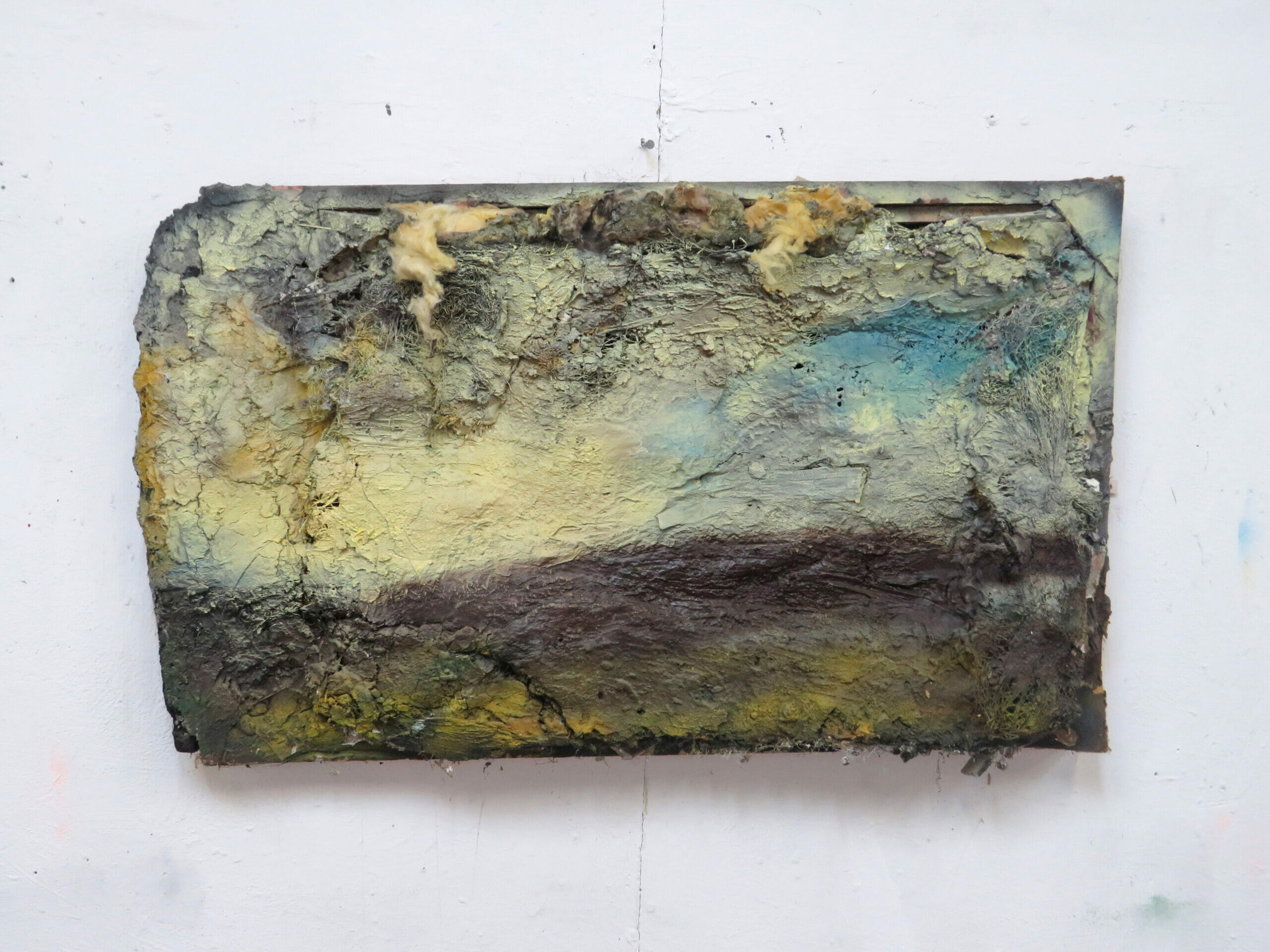
Jon: Your recent exhibition in Torrington was entitled “Lost Landscapes” and your work often focusses on neglected and overlooked places – the unloved “edgelands” – can you tell us a little about what draws you to this particular type of landscape?
Andrew: I grew up on a farm by the now new docks at Royal Portbury. My playground was this landscape and the one that surrounded it, which was then filled with spoil heaps from the nearby power station and Second World War military ruins.
Between this, much of the remaining land had turned to wilderness. – an edgeland environment. Often my work delves back to this – a broken landscape, but one that ironically I do not think was broken at all – just complex and wonderful.
Jon: It strikes me that one of the recurring themes in your work is about challenging our perceptions of and responses to “wilderness” and natural beauty – would you agree with this?
Andrew: It’s a rich and interesting debate. I paint roads through Dartmoor, Amazon warehouses, polluted wastelands, burning hedges before building work.
My images are often set against massive sunsets and romantic skies. I like to play with notions of the sublime, ideas of beauty, wilderness in surprising places.

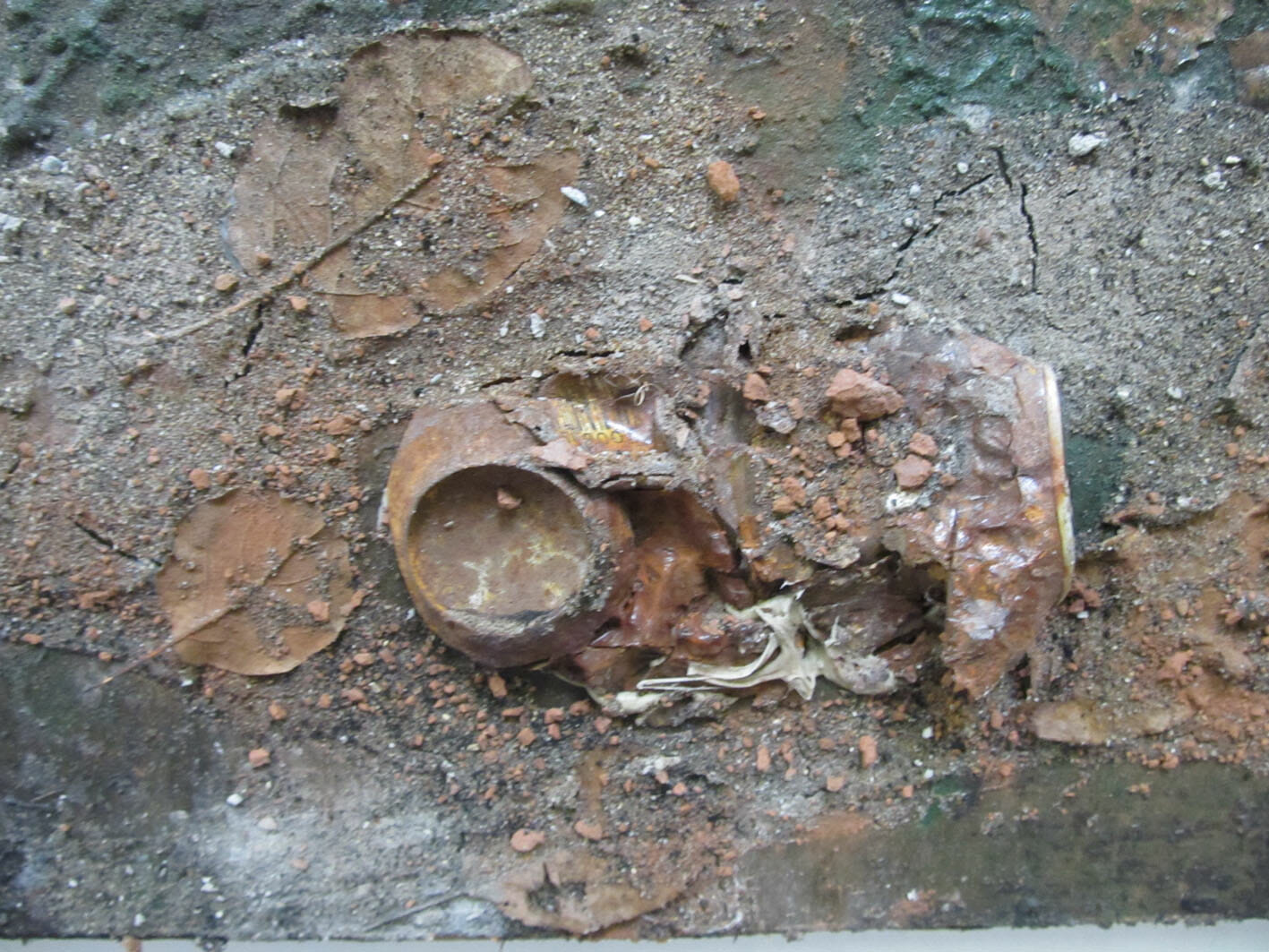
Jon: One of the characteristics of your artistic practice is the inclusion of elements of the landscape itself into the piece, and some of your works have been described as “sedimentary” in the way in which they layer memories and textures. Can you talk us through your approach to creating such work?
Andrew: I like my landscapes to suggest a more complex and layered landscape. Helping on archaeological digs, I was fascinated by the layers of history – how layers within change colour.
Maybe this has come into my paintings? The sedimentary layering of texture suggesting that of the land, history and memories. Toys and found objects are also added to this sometimes complex mix.
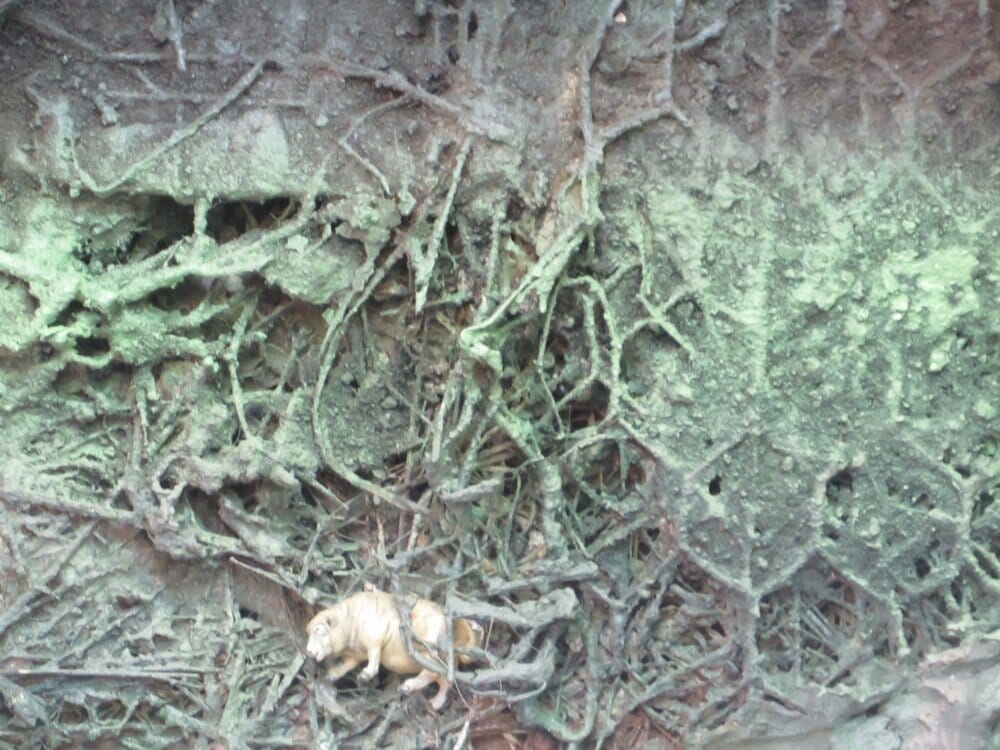
Jon: Is much of your work pre-planned when you start a project or is it more of an organic, free-form process?
Andrew: It’s a bit of both. Often voices change within the journey of a painting. I might start with an idea, but adapt. A piece of texture pushes it in another direction and demands a different response.
Landscapes move to seascapes… it’s important to allow accidents to happen. That said, strong decision-making is also important
Jon: Do you work outdoors or is your work more studio-based?
Andrew: I worked outside for years in all weathers – sometimes in my car. Giving lifts later, grumpy passengers often complained they got paint on their clothes!
More recently, walks have replaced this first-hand vision. Paintings are formed in a less immediate way in the studio and hopefully find a different intensity by allowing memory and layering to come into the images.
A new painting is a new journey, so there are no hard and fast rules. Surprise is good – in my work an element of chaos normally has to happen before I can attempt a finish.

Sky, Heavy Clouds, Brown Dartmoor
Jon: Do you find that your approach changes significantly depending on the subject matter?
Andrew: There are techniques that suit certain subject matters. It is, of course, about choices – what finish do I want?
A new painting is a new journey, so there are no hard and fast rules. Surprise is good – in my work an element of chaos normally has to happen before I can attempt a finish.
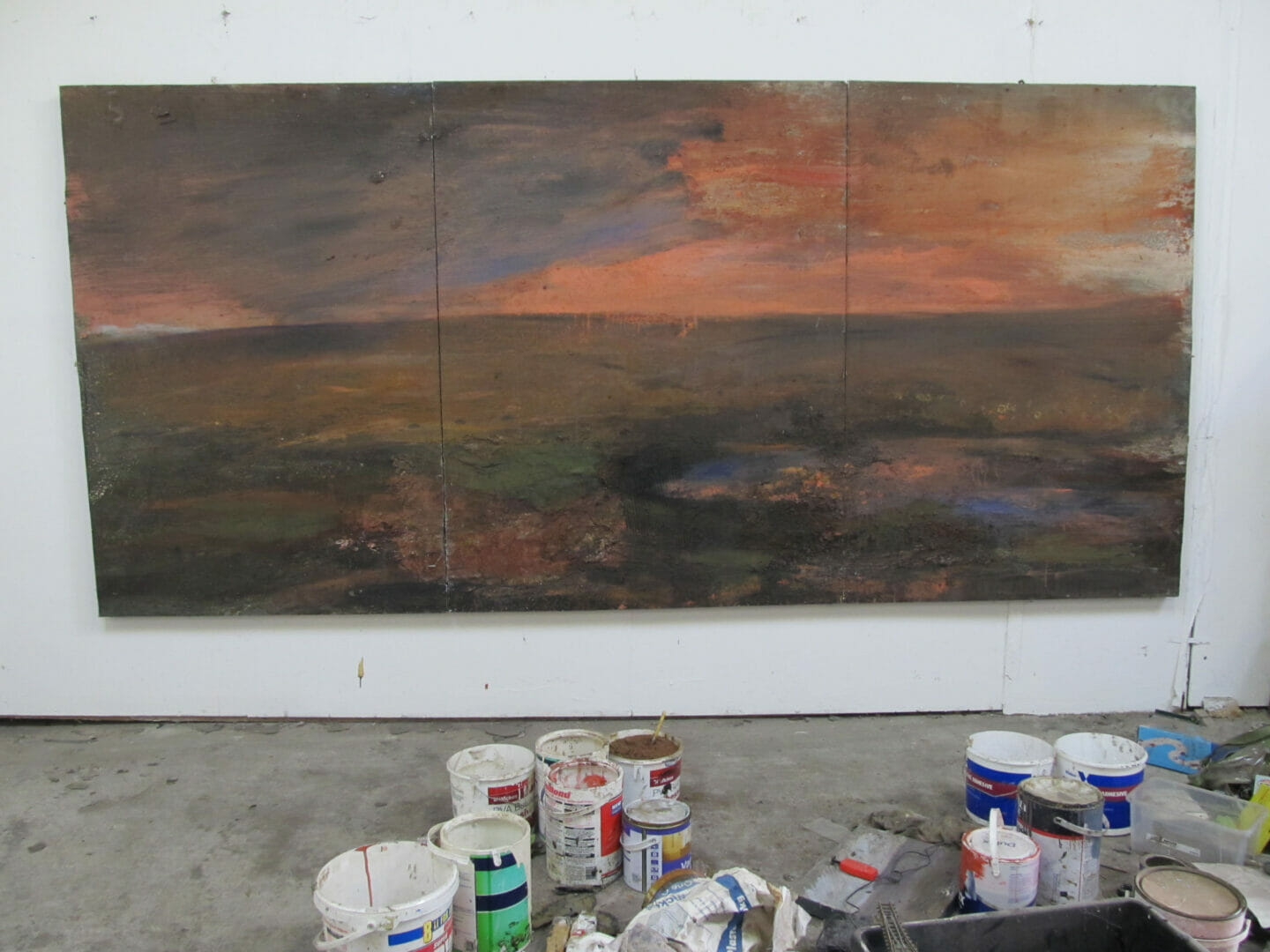
Jon: Those of us with attachments to Dartmoor often speak of it as a “layered landscape” – one which has been shaped by a complex mix of natural processes and past human use – your Dartmoor work appears to reflect this view of the moor in its rich textures and layers. Can you tell us a little about your relationship with Dartmoor – how you were introduced to the moor and how the landscape here has informed your work?
Andrew: As a child I remember we often went over the moor to Cornwall. Then, about twenty seven years ago I wanted to return and started wild-camping on Dartmoor. A regular trip was the train to Ivybridge then walking across the South Moor to Princetown or Okehampton, often on my own.
I found this very powerful – work and paintings just came. I searched out archaeological and industrial remains as part of this journey.
Walking remains part of my Dartmoor journey, however increasingly swapping tents for B&Bs.
Jon: You mentioned that wild camping was an important part of the process of first getting to know the moor. What are your thoughts on the recent challenges to the legality of wild camping on Dartmoor and the wider question of access to wild places?
Andrew: To wake up on the moor and feel the complete isolation is a complex and sometimes cold experience – campsites are not the same – it’s a rare treat on a crowded island.
Similarly, a balanced access to wild places is so important – to have a breathing space away from the urban lives most of us live. Dartmoor is lucky – it still gives a sense of vastness and, once away from car parks, it is still possible not to see another person all day.
Summer walks are normally not as powerful to me as autumn ones – it is easier to become lost in yourself, when the wind and cold are hitting you.
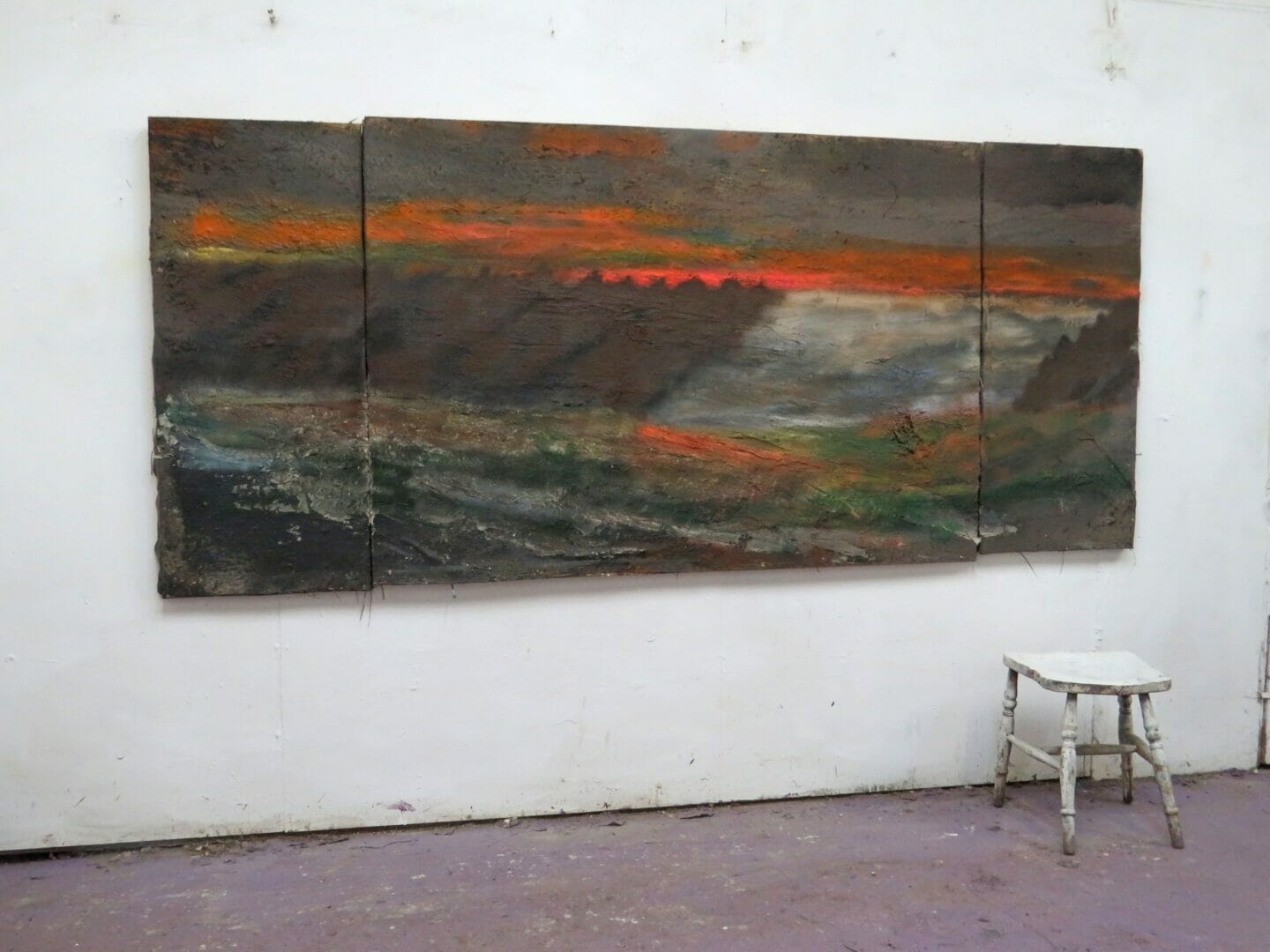
Jon: Do you plan to do more work featuring the moor?
Andrew: Yes – it’s ever ongoing. A recent triptych was inspired by the foothills of Dartmoor. A fine frost had settled and the sun was rising – I just remembered it and had to paint it
Summer walks are normally not as powerful to me as autumn ones – it is easier to become lost in yourself, when the wind and cold are hitting you.
Jon: There is a physicality and tactile and organic nature to your work that seems to eschew modern technology to some extent – is this a conscious intention? What are your thoughts on the impact of technology on art, both now and in the future?
Andrew: I enjoy 19th Century romantic landscape painting, so things are going very fast in a different direction, however we are part of this world and have to be aware of the possibilities of artificial intelligence and all new forms of expression.
Artists are magpies and should use any devices that can work for them.
Although a lot of my colours are organic and I use natural pigments, I mix these with roofing felt and plastics, as well as spray paint
So maybe sadly I make full use of modern chemical works.
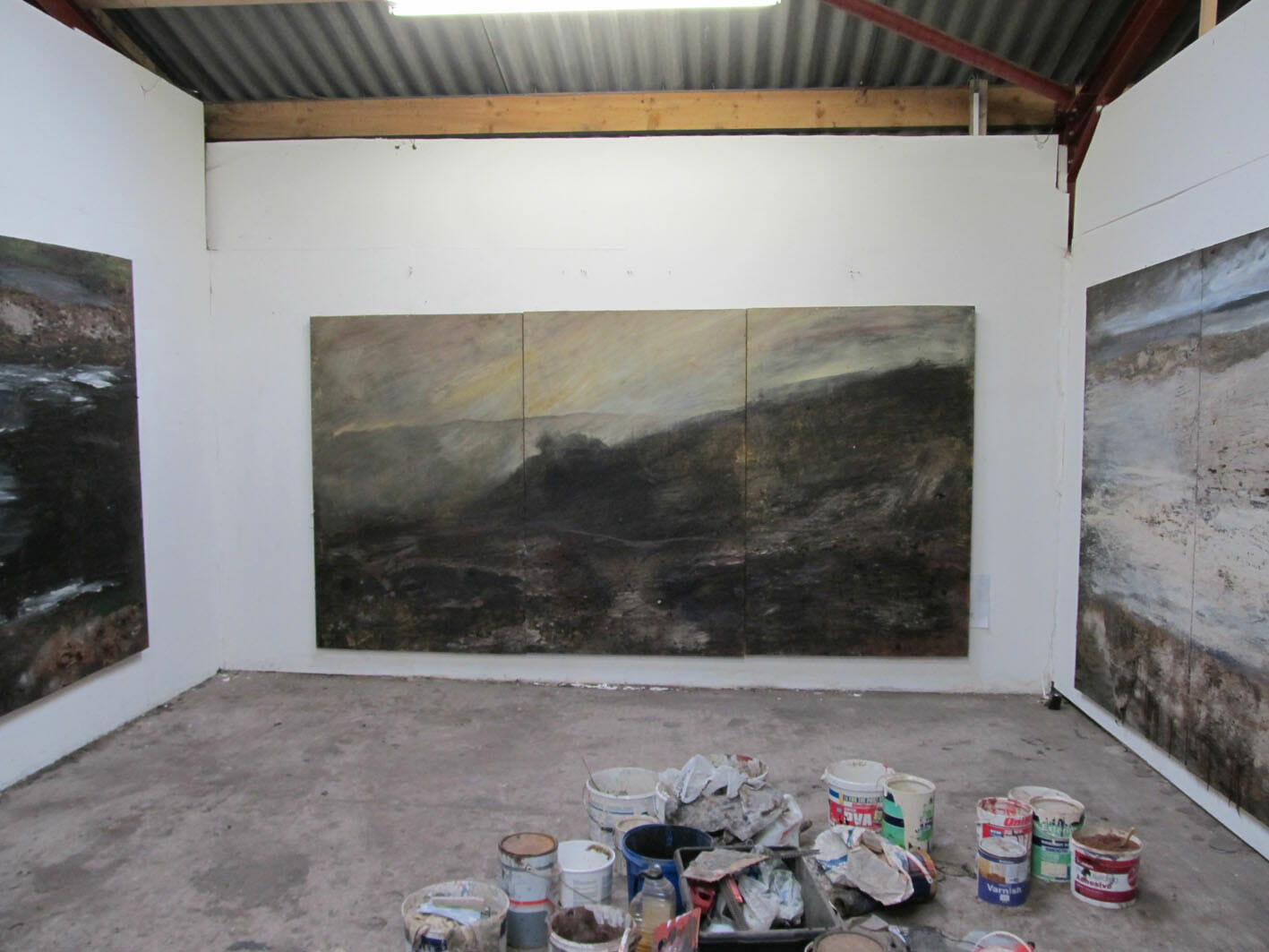
Jon: What current projects do you have ongoing, and what are your future plans?
Andrew: I’m presently finishing two paintings for the RWA Autumn Show and also hay-making. I was lucky enough to have a few shows this year and in 2022, so now is the time to work on a new body of work, which is always exciting.
You can find out more about Andrew’s work at www.andrewhardwick.com. Andrew is also active on Instagram and exhibits at the Anima Mundi gallery in St Ives.
